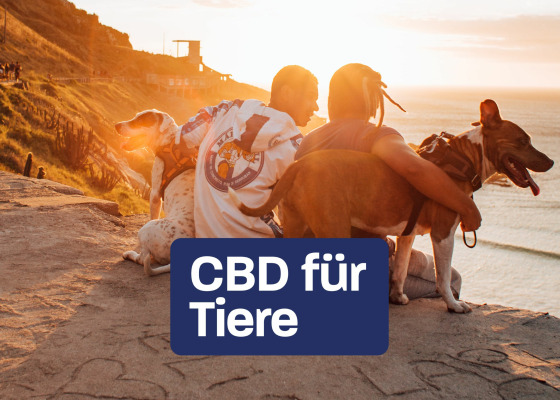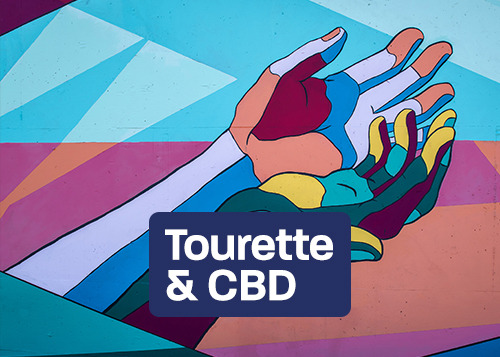Cannabinoids - active ingredients of the cannabis plant.
Over 100 cannabinoids have been discovered in the cannabis plant to date. They all hold often untapped potential for health. We present the most important ones.
•
Cannabis in research
The fact that cannabis has been at man's side for many thousands of years is evidenced by countless archaeological finds spread across the entire Eurasian continent. Finally, in 1963, Raphael Mechoulam began serious cannabinoid research when he isolated CBD from the plant in the laboratory and THC a year later. In stark contrast to the 1961 United Nations ban on cannabis as a useless poisonous plant, Mechoulam became the gray eminence of cannabis researchers. His early achievements formed the basis for the return of cannabis to medicine and home medicine cabinets that can be observed everywhere today.
Wikipedia puts the number of currently known cannabinoids at 113, and current laboratory analysis methods rarely detect more than 10% of them. Also, new cannabinoids are constantly being isolated and made known. Let's take a look at the most important ones.
•
From CBD to THC:
The most important cannabinoids
•
CBD = Cannabidiol
CBD is the first discovered and second most abundant biochemical produced by the cannabis plant, with immense potential for human health. We have dedicated a separate article to this cannabinoid, along with THC.
Most common effects: sedative, anti-inflammatory, neuroprotective, muscle relaxant, bone-healing, antitumoral, antipsychotic, pain distancing, appetite suppressant, antispasmodic, non-intoxicating.
•
THC = Tetrahydrocannabinol
The second cannabinoid ever individually crystallized is also the most famous because it plays a major role in triggering the high feeling. More details here.
Most common effects: anti-inflammatory, neuroprotective, muscle relaxant, antitumor, sleep enhancer, euphoriant, intoxicant, antispasmodic, analgesic, appetite enhancer, psychotic in overdose.
•
CBG = Cannabigerol
One cannabinoid that is currently being very intensively observed and researched is CBG. CBG is actually the precursor substance that the plant first forms before it produces CBD and THC from it at an advanced age.
CBG doesn't get you high, but it does have healing properties. In laboratory tests it was shown to be a very potent antibiotic, well effective even against multi-resistant germs. CBG can also modulate the human hormone balance, stabilizing mood and calming nerves. Inflammatory skin diseases as well as of the gastrointestinal tract also seem to respond well to CBG. Cancer is also an area where CBG is raising hopes.
Research predicts a bright future for the compound.
Most common effects: antibiotic, anti-inflammatory, homeostasis, antitumoral
•
CBC = Cannabichromen
The cannabis plant produces CBC from CBG. Its range of action is mainly in pain and depression, as well as in enhancing the effect of other cannabinoids (entourage effect). The latter has attracted particular attention in cancer research.
Moreover, CBC has shown very good effects against acne, an extremely difficult therapeutic area. Anti-inflammatory effects and protective effects for brain cells have also been observed.
Most common effects: analgesic, antispasmodic, anti-inflammatory
•
CBN = Cannabinol
As the plant ages, it gradually converts more and more of its cannabinoids to CBN, including THC in particular. The effect of CBN is still psychoactive - sedative, sleep-inducing, antispasmodic - but noticeably weaker. It's a maturation process - it often continues for many years after harvest and, depending on storage, can significantly increase quality.
Most common effects: analgesic, antispasmodic, antibacterial, anti-inflammatory, sleep enhancer, antispasmodic, appetite enhancer
•
CBL = Cannabicyclol
This little known cannabis glandular secretion appears to be formed from CBC by exposure to light. Probably a degradation product, similar to CBN. This is also where the findings of cannabis residues in a five thousand year old Chinese sacrificial tomb point to. They contained vast amounts of CBN and CBL, but no detectable THC. By the way, the healing effect of CBL is still to be discovered.
•
CBT = Cannabitriol
Isolated in Japan as early as 1966, this whey molecule is practically identical in structure to THC, but is richer by two hyroxy groups in two places. What this means for its effect is largely unexplored.
•
CBT-C = Cannabicitran
This substance, which the hemp plant probably produces from CBDA as a precursor molecule, appears to have an influence on intraocular pressure and is also likely to have antipsychotic effects. More research is urgently needed.
•
Cannabinoid groups:
Cannabicitran, from the group of cannabinoids ending in -C, shows a general characteristic among cannabinoids: There are several variants of each type. Eight others have been found in the CBT cannabinoid group, for example.
CBD, THC, and CBG also have variants that end in -A, -V, -VA, or -P, for example. The variants of a group often have similar health effects, but there are also significant differences.
A very nice overview is provided by Dr. ElSohly in his free downloadable reference book:
Marijuana and the Cannabinoids


